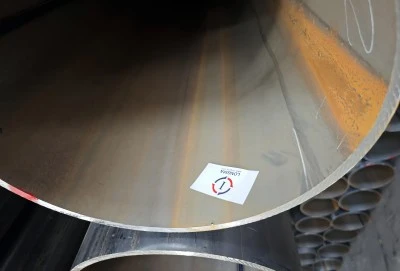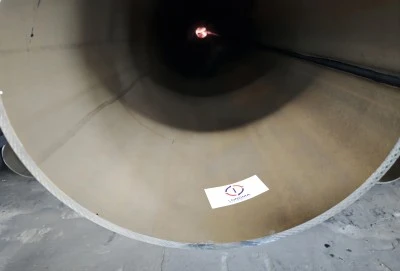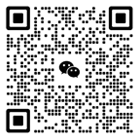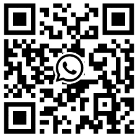In the ever-evolving world of oil and gas infrastructure, API 5L ERW (Electric Resistance Welded) pipes play a crucial role in ensuring safe and efficient transportation of hydrocarbons. These pipes are designed to meet rigorous industry standards, providing reliability and durability in demanding environments. In this comprehensive guide, we'll explore how API 5L ERW pipes adhere to industry standards, the specifications they must comply with, and the testing processes that guarantee their quality.
|
|
|
What industry standards govern API 5L ERW pipes?
API 5L ERW pipes are subject to a set of stringent industry standards that ensure their performance and safety in various applications. The primary standard governing these pipes is the American Petroleum Institute (API) Specification 5L, which outlines the requirements for line pipe used in oil and gas transportation systems.
The API 5L specification covers various aspects of pipe manufacturing, including:
- Material composition
- Manufacturing processes
- Dimensional tolerances
- Mechanical properties
- Testing requirements
- Marking and documentation
In addition to API 5L, other industry standards that may apply to ERW pipes include:
- ASTM A53: Standard Specification for Pipe, Steel, Black and Hot-Dipped, Zinc-Coated, Welded and Seamless
- ISO 3183: Petroleum and natural gas industries — Steel pipe for pipeline transportation systems
- DNV-OS-F101: Submarine Pipeline Systems
These standards work in conjunction with API 5L to ensure that ERW pipes meet the highest quality and safety requirements across different applications and regions.
It's worth noting that API 5L ERW pipes are categorized into two product specification levels (PSL): PSL1 and PSL2. PSL2 pipes have more stringent requirements and are typically used in more demanding applications.
How does API 5L ERW pipe comply with API 5L specifications?
To comply with API 5L specifications, manufacturers of ERW pipes must adhere to strict guidelines throughout the production process. Here are some key areas where API 5L ERW pipes meet the required specifications:
1. Material Composition
API 5L ERW pipes are made from specific grades of steel, such as Grade B, X42, X52, X60, and X70. Each grade has defined chemical composition limits for elements like carbon, manganese, phosphorus, and sulfur. Manufacturers must ensure that the steel used in pipe production falls within these specified ranges.
2. Manufacturing Process
The Electric Resistance Welding (ERW) process used to manufacture these pipes must meet API 5L requirements. This process involves forming steel coils into a tubular shape and welding the seam using high-frequency electrical current. The welding process must be carefully controlled to ensure proper fusion and weld integrity.
3. Dimensional Tolerances
API 5L specifies strict dimensional tolerances for ERW pipes, including:
- Outside diameter
- Wall thickness
- Length
- Straightness
- End squareness
Manufacturers must ensure that their pipes fall within these specified tolerances to comply with the standard.
4. Mechanical Properties
API 5L ERW pipes must meet specific mechanical property requirements, including:
- Yield strength
- Tensile strength
- Elongation
- Hardness
These properties are crucial for ensuring the pipe's performance under various operating conditions.
5. Surface Finish and Coating
The standard also specifies requirements for surface finish and coating (if applicable). Pipes must be free from defects and have a uniform surface finish. If coatings are applied, they must meet the specified requirements for thickness, adhesion, and performance.
What testing and inspection processes ensure API 5L ERW pipe quality?
To guarantee that API 5L ERW pipes meet the required standards, manufacturers employ a rigorous series of testing and inspection processes. These procedures are designed to verify the pipes' mechanical properties, dimensional accuracy, and overall quality. Let's explore the key testing and inspection processes:
1. Non-Destructive Testing (NDT)
Non-destructive testing methods are used to inspect the pipes without causing damage. Common NDT techniques for API 5L ERW pipes include:
- Ultrasonic Testing (UT): This method uses high-frequency sound waves to detect internal defects, such as laminations or inclusions in the pipe wall.
- Electromagnetic Testing (EMT): Also known as eddy current testing, this technique is used to detect surface and near-surface defects in the pipe body and weld seam.
- Magnetic Particle Inspection (MPI): This method is used to detect surface and near-surface defects in ferromagnetic materials.
2. Hydrostatic Testing
Hydrostatic testing is a crucial step in ensuring the integrity of API 5L ERW pipes. During this test, the pipe is filled with water and pressurized to a specified level, typically 1.5 times the design pressure. The pipe must maintain this pressure for a set period without leaking or showing signs of deformation.
3. Mechanical Testing
Various mechanical tests are performed to verify the pipe's properties and compliance with API 5L specifications:
- Tensile Testing: Determines the pipe's yield strength, tensile strength, and elongation.
- Flattening Test: Assesses the ductility of the pipe and the integrity of the weld seam.
- Bend Test: Evaluates the pipe's ability to withstand bending without cracking or other defects.
- Hardness Test: Measures the hardness of the pipe material, which correlates with its strength and wear resistance.
4. Chemical Analysis
Manufacturers perform chemical analysis on the steel used in pipe production to ensure it meets the composition requirements specified in API 5L. This analysis typically includes measuring the concentrations of elements such as carbon, manganese, phosphorus, and sulfur.
5. Dimensional Inspection
Careful measurements are taken to verify that the pipes meet the dimensional tolerances specified in API 5L. This includes checking:
- Outside diameter
- Wall thickness
- Length
- Straightness
- End squareness
6. Visual Inspection
Trained inspectors perform visual examinations of the pipes to identify any surface defects, such as dents, gouges, or irregularities in the weld seam. This inspection helps ensure that the pipes meet the surface finish requirements specified in API 5L.
7. Weld Seam Inspection
The weld seam of ERW pipes receives special attention during the inspection process. In addition to NDT methods, manufacturers may perform destructive tests on weld seam samples to verify the weld's integrity and mechanical properties.
8. Coating Inspection (if applicable)
For coated pipes, additional tests are performed to ensure the coating meets the specified requirements. These may include:
- Coating thickness measurements
- Adhesion tests
- Holiday detection (to identify pinholes or other discontinuities in the coating)
By implementing these comprehensive testing and inspection processes, manufacturers can ensure that their API 5L ERW pipes consistently meet the required industry standards and specifications.
Contact Longma Group
If you're in need of premium API 5L ERW pipes that meet or exceed industry standards, look no further than Longma Group. With our commitment to quality, extensive range of products, and fast delivery times, we're your ideal partner for all your pipeline needs. Don't let subpar pipes compromise your projects – reach out to us today at info@longma-group.com and experience the difference that top-quality API 5L pipes can make in your operations.














